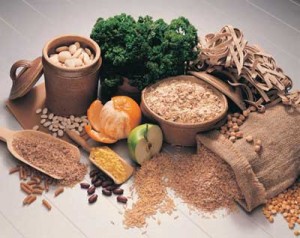Good Carbs vs. Bad Carbs
Carbohydrates. Does that 13 letter word make you cringe? These days, even celebrity trainers are supporting low carb diets, with no carbs after 3 p.m. or no carbs for dinner. When does it stop?
Over the past five years carbs have been the most feared food if you were on any diet plan. Well I’m here to tell you, if you’ve been trying to lose a few pounds, workout with weights four or more times a week, are trying to lean out or build muscle, and do cardio– you’ll need carbs.
I’m going to first go over the “bad” carbs, then spend a little more time on the “good” carbs so you can see the benefits, what to look for and why, no matter what, you need them in your life.Carbs are indeed a very important part of our lives – the right kind of carbs that is. So what is the difference between a white (processed or simple) carb and a whole wheat (complex) carb?
The “Bad” Carbs
- Sugars
- Added Sugars
- Refined White Grains
Sugars and refined grains, like crackers, white bread, pasta and chips supply quick energy in to the body in the form of glucose. The only time this would be good to eat is if you need a quick energy surge, like after the gym. Have you ever felt like you might faint and ate crackers or orange juice to quickly pick you up? It’s that quick fix of sugar that spikes up our insulin, but sends it crashing right back down (maybe down farther than what you were before).
Sucrose (table sugar), fructose (fruit sugar) and high fructose corn syrup (man made sugar) are some examples of “bad” carbs and are found in your favorite sweet treats like cake, ice cream, pie, candy bars, danishes, etc. Avoid these isles at all costs and keep them out of the house!
Even foods that are labeled “healthy” or “whole grains” contain high fructose corn syrup so always read the ingredients list. Ingredients are listed in the order of quantity, so the bulk of most food is made up in the first few ingredients. Eating a lot of simple sugars too often can lead to obesity, hypertension, heart disease and diabetes and looking at the numbers over the past 20 years I’d have to agree with the link.
The key here is to choose carbs with simple sugars from fruits and vegetables like apples, bananas, potatoes, etc. I’m sure you heard it before and you’ll hear it again— moderation, moderation, moderation.
The “Good” Carbs
Good carbohydrates, the ones you want to choose, are much less processed and tend to have fiber in them. Fiber is the one thing that keeps us satiated longer, absorbs slowly in our system and fills us up with vitamins and minerals — not sugar. Fiber is the part of plant we can’t digest. Refined and processed carbs strip away the very beneficial fiber that our body needs. Complex carbs allow our blood sugar to slowly rise, giving us an even flow of glucose (energy).
Good examples of this would be fruits, vegetables, beans and legumes and whole wheat products. Women need 21-25 grams of fiber each day and Men need 30-38, depending on your age (the older you are, the less you need). There is a lot of evidence out there that supports a diet high in fiber decreases the risk of colon cancer and helps promote better weight control.
Good carbs tend to have these healthy characteristics:
- High in Fiber: helps remove toxins, helps keeps your body regulated, provides sustained energy, helps you stay full longer.
- Low “Energy Density” (except for nuts and seeds): helps you feel full without a ton of calories, provides sustained energy, helps promote weight loss and weight maintenance.
- Low Glycemic Index: stabilizes blood sugar levels and insulin production.
- High in Nutrients: naturally contain vitamins, minerals, enzymes, and other phytonutrients to improve health and prevent chronic diseases.
Here are some of my favorite “good” carbs
- Oatmeal
- Kashi Go Lean Cereal
- Sweet potatoes
- Broccoli
- Brussels Sprouts
- Cantaloupe
- Blue Berries
- Brown Rice
- Whole Wheat Pasta with Marinara
- Whole Wheat Pitas and Subs with low sodium deli meat
- Whole Wheat Couscous
- Bulgur
- Whole Wheat crust for Pizza (home made)
- Pinto Beans
- Almonds (which contain healthy fats too)
When choosing whole wheat products look at how much fiber it has. You’ll want to make sure that the cereal you choose has at least 6 grams of fiber per serving and that bread is whole wheat (read the ingredients) and contains at least 3 grams of fiber per slice. Your carb intake should be 45% of your daily caloric intake.
Here’s a pretty good way to live by: If you worked out extensively, then don’t be afraid to include carbs in meals (just avoid them at dinner) as your body will need them. If you didn’t work out – then stick to a low carb meal plan for the day. Either way, avoid all carbs at least for the last 3 hours of your day before bed.
Hopefully this clarifies some of the basic understanding surrounding carb-intake. If you have any further questions, just leave a comment below!
Don’t forget to join us on Facebook by clicking here. 🙂
